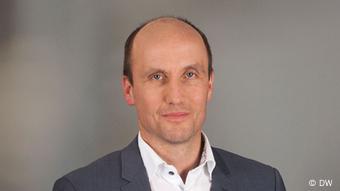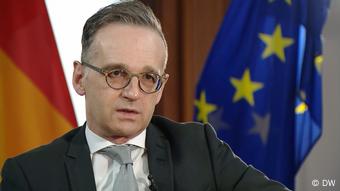Denmark is believed to have helped the US National Security Agency spy on German politicians. Anyone who's surprised by this is being naive, writes Marcel Fürstenau

I spy with my little eye: Intelligence services remain largely uncontrolled by their respective governments
Denmark has now been added to the unofficial list of states who are believed to have treated supposedly friendly countries as if they were enemies. From 2012 to 2014, Germany's northern neighbor is said to have assisted the National Security Agency (NSA) in spying on the electronic communications of prominent German politicians: Chancellor Angela Merkel, Frank-Walter Steinmeier — then foreign minister, now German president — and Peer Steinbrück, the Social Democrats' chancellor candidate in the 2013 election.
Thanks to Edward Snowden, it has been common knowledge for some time that the NSA had targeted Merkel and Steinmeier. His 2013 revelations sent shockwaves around the world. It was always obvious that secret service agencies, even those of democratic states, are not simply harmless associations. But the degree of ruthlessness and lack of scruple astonished even political heavyweights like Angela Merkel, a victim of the NSA's surveillance. Her comment at the time — "Spying among friends is unacceptable" — has become a familiar bon mot. Because, in reality, anything goes. Spying knows no limits, either moral or geographical.
Secret services must be subject to stricter control

DW's Marcel Fürstenau
We can and should continue to be outraged at the way the NSA, Germany's Federal Intelligence Service (BND), and others of their ilk effectively write their own rules. However, since the Snowden revelations at the very latest, this reaction — while all too understandable — seems downright naive. It would be much more important for the political leaders in Germany, Denmark and all other countries that practice the separation of powers to finally exercise better control over their intelligence services. Unfortunately, this looks as unlikely as ever.
In Germany, a parliamentary investigative committee spent years looking into the NSA/BND scandal, but the outcome was scandalous and shameful. The reform led to the legalization of the illegal wiretapping practice, which had only became common knowledge as a result of Snowden's information. Fortunately, Germany's Federal Constitutional Court proved it could be relied on: It quashed this shameless and false relabeling in 2020.
A scandal: Snowden in Russian exile
Anyone who wants to understand how the United States, Germany and democratic Europe tick with regard to intelligence services need only look at Snowdon's fate. Since making his unprecedented revelations, he has been living in exile in Russia. The fact that Vladimir Putin, the strongman in the Kremlin and a former Soviet secret service (KGB) officer, has to hold his protective hand over Snowden is and remains an indictment of the West.
And unfortunately, there is nothing whatsoever to indicate this might change. Because the 37-year-old American's opponents on both sides of the Atlantic are in agreement: In their eyes, he is a traitor. This was the opinion of former US President Barack Obama, who was in office when Snowden made his revelations; and the current president, Joe Biden, shares the same view.
A culture change is needed
There have been no reports of Merkel, Steinmeier, or other German victims of the NSA insulting the whistle-blower in the same way — but the controversial former president of Germany's domestic intelligence service, Hans-Georg Maassen, has done so. It is people like him, and their ideal of the intelligence services remaining largely uncontrolled, that stand in the way of a radical culture change in this area. This will remain the case for as long as they still have enough support from legislators and governments — and it will have to change before Snowden can hope to leave his dubious exile in Russia.
This article was translated from German.












 ©
©



